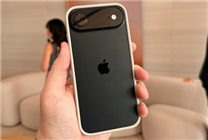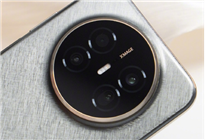Key Insights
- Departure of Key Designer: Abidur Chowdhury, a pivotal figure in Apple’s design department, has left to pursue opportunities in the AI sector.
- Impact on Apple: Chowdhury’s exit raises questions amid a series of organizational shifts within Apple’s design team.
- Continued Innovation: The introduction of the new iPhone Air underscores ongoing product development despite personnel changes.
Abidur Chowdhury Leaves Apple: A Shift in the Design Landscape
Abidur Chowdhury, an influential industrial designer behind the recently launched iPhone Air, has announced his departure from Apple to join an emerging artificial intelligence startup. This news, confirmed by industry insiders, marks a significant moment for the tech giant, known for its steadfast innovation and design excellence.
Chowdhury’s tenure at Apple spanned over six years, beginning in 2019 during a pivotal restructuring of the design team following the departure of Jony Ive, the renowned design chief. His involvement in the creation of the iPhone Air, which debuted this September as the "thinnest iPhone in history," is notable. Constructed with a sleek titanium chassis, the iPhone Air measures just 5.6 mm at its thinnest point and utilizes eSIM technology to maximize internal space, showcasing Chowdhury’s innovative approach to its design.
Throughout his career at Apple, Chowdhury has not only contributed to design but has also taken on a public-facing role. He was prominently featured in the company’s fall conference video, wherein he discussed the intricate design process and features of the iPhone Air—a high-profile responsibility that speaks to his influence within the organization.
In the current zeitgeist of Apple, Chowdhury’s departure doesn’t seem to be linked to the performance of the iPhone Air itself, which, despite receiving generally positive feedback for its design, has seen modest sales figures. Reports indicate that the next generation of the iPhone Air is already in development, targeting a release in 2027. This suggests that Apple continues to pursue innovation in its product lines, regardless of recent personnel changes.
Molly Anderson, the newly appointed design director, will take the reins in introducing the upcoming iPhone 17 Pro, marking a new chapter in Apple’s design evolution. Anderson steps into her role amid significant transitions within the company, including the recent resignation of Jeff Williams, the former COO and head of the design team. This reshuffling places Apple’s design operations directly under the leadership of CEO Tim Cook, signaling a potential shift in the strategic direction of the design team.
Chowdhury’s exit reflects a broader trend within Apple’s design department, which has experienced considerable changes this year. Following the exit of key figures, the team is now composed of a mix of youthful talent and newly appointed members—an effort to invigorate innovation and creativity.
As Apple navigates this transition, the company remains committed to pushing the boundaries of technology and design. The accomplishments of designers like Abidur Chowdhury underscore a legacy of innovation that will likely influence future generations of Apple products.
In conclusion, while the departure of a key designer like Chowdhury raises challenges for Apple, it also opens the door to fresh perspectives and new ideas. With strong leadership and a commitment to innovation, Apple aims to maintain its position as a leader in technology and design, welcoming new opportunities for growth.
This article reflects the latest shifts within Apple’s design team and assesses the impact of these changes on the tech giant’s future innovations.







